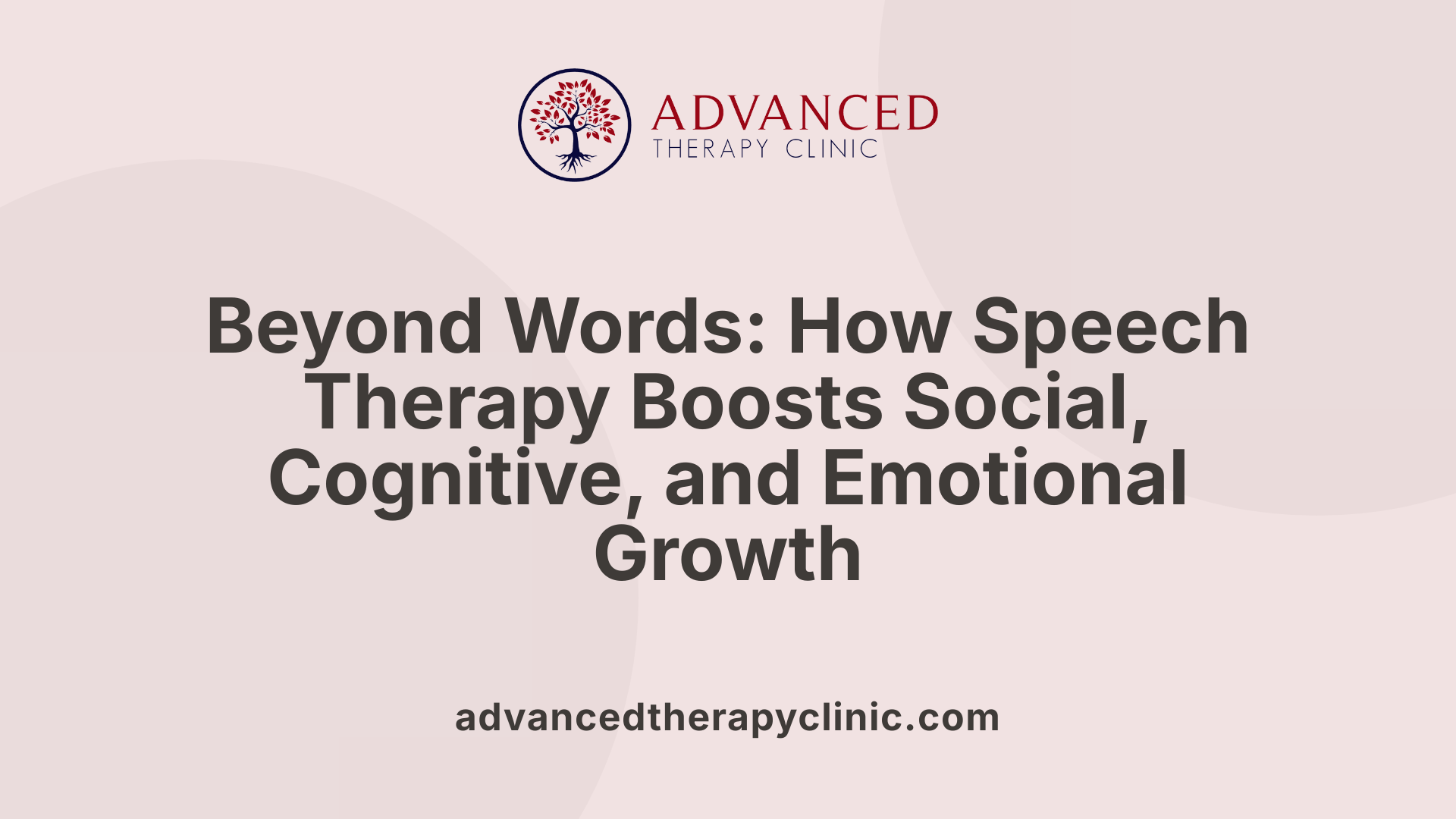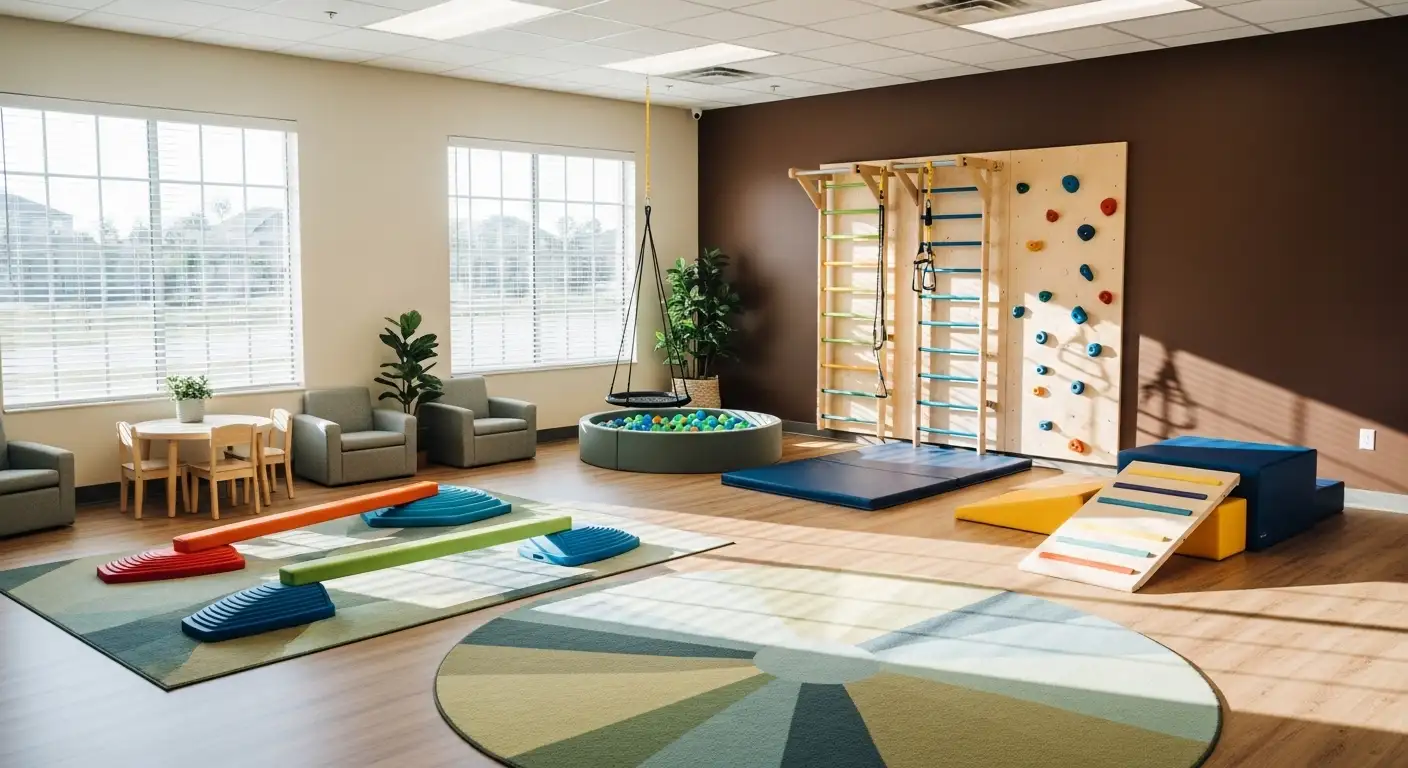The Importance of Speech Therapy for Communication Development


Understanding the Role of Speech Therapy in Child Development
Speech therapy stands as a pivotal intervention for children facing speech, language, or communication difficulties. Delivered by skilled speech-language pathologists (SLPs), it addresses a wide range of disorders to foster effective communication and overall development. This article explores the significance of speech therapy within the broader therapeutic landscape, elucidates its methods and benefits, and highlights the importance of early, multidisciplinary intervention for optimal communication development in children.
The Spectrum of Therapy-Related Fields and Their Roles

What Are the Different Therapy-Related Fields Included Under the Collective Term for Therapies?
The term "therapies" covers a wide variety of specialized fields designed to support physical, mental, and emotional well-being. These fields span multiple disciplines, each targeting different aspects of health and development.
Mental Health Therapies include cognitive-behavioral therapy (CBT), dialectical behavior therapy (DBT), counseling, and psychotherapy. These services are typically delivered by professionals such as psychologists, counselors, social workers, and psychiatrists. They focus on emotional, cognitive, and psychological challenges to improve mental wellness and coping mechanisms.
Physical Therapy (PT) aims at enhancing gross motor skills, strength, and range of motion. It helps individuals recover or improve their ability to move and perform physical activities through targeted exercises and treatments.
Occupational Therapy (OT) focuses on fine motor skills, sensory integration, and daily living activities like dressing, eating, and playing. Occupational therapists use specialized techniques such as sensory processing interventions to promote independence in everyday tasks.
Speech Therapy supports individuals, especially children, who face communication challenges. Speech-language pathologists work to improve articulation, language comprehension, and social communication skills through personalized treatment plans involving sound training, role-playing, and repetition drills.
Nutritional Therapy helps individuals achieve better health by addressing diet and lifestyle factors. This approach can support overall physical and mental well-being by promoting balanced nutrition.
Emotional and Spiritual Support may be provided by peer specialists or pastoral counselors who offer empathy, guidance, and comfort, addressing emotional and spiritual needs for holistic healing.
Together, these diverse therapy-related fields form a multidisciplinary network that supports individuals' development and health from multiple angles. This integrated approach is especially important in child development, ensuring comprehensive care that addresses physical abilities, communication, cognitive skills, and emotional health.
Understanding Speech Therapy: A Targeted Approach to Communication

What is Speech Therapy and Its Main Objectives?
Speech therapy is a specialized intervention conducted by speech-language pathologists (SLPs) designed to improve communication skills in children facing speech, language, or related disorders. Its primary goal is to enhance clarity of speech, language comprehension, and social communication abilities, enabling children to interact effectively in social and academic settings.
Who are Speech-Language Pathologists (SLPs) and What Role Do They Play?
SLPs are trained professionals who assess, diagnose, and treat communication disorders. They develop personalized treatment plans tailored to the unique needs of each child. Through various techniques, they support children in overcoming speech and language challenges, promoting overall communication growth.
What Communication Issues Does Speech Therapy Address?
Speech therapy covers a broad range of challenges including:
- Articulation difficulties, where children struggle to pronounce sounds correctly
- Expressive language disorders involving challenges in using words and sentences to communicate
- Feeding and swallowing difficulties
- Communication challenges associated with autism spectrum disorder (ASD)
- Speech and language issues due to genetic disorders
How Are Children Assessed in Speech Therapy?
Assessment begins with careful observation of the child's natural communication abilities and is often supplemented with formal testing. These evaluation steps help identify specific areas of difficulty, which guide the development of focused therapy strategies.
What Does an Individualized Speech Therapy Session Look Like?
Therapy sessions are structured around three phases: initial assessment, practice activities, and feedback. Activities may include verbal demonstrations, sound training, role-playing, storytelling, and repetition drills. This cyclical approach allows therapists to continuously tailor interventions to support the child's evolving needs effectively.
Early Intervention: The Keystone of Speech Therapy Success

Why is early intervention important in speech therapy?
Early intervention in speech therapy is vital because it leverages the child's developmental window to maximize communication skills growth. Addressing speech and language difficulties promptly helps avoid further challenges in academic and social settings, laying a strong foundation for lifelong communication.
How does early therapy impact the optimal development of communication?
Starting therapy early allows speech-language pathologists to guide children through formative stages when language and cognitive abilities are rapidly evolving. This timely support fosters clearer speech, improved language comprehension, and enhanced social interaction skills.
Does the age of the child affect therapy outcomes?
Yes, the effectiveness of speech therapy is influenced by the child's age at the start of intervention as well as individual circumstances such as the severity of the disorder. Younger children often show more rapid improvement due to neuroplasticity, although dedicated therapy can help children of all ages.
What role does parental involvement play in speech therapy success?
Parental engagement is crucial for reinforcing therapy goals outside clinical settings. When parents actively participate in exercises and encourage communication at home, children benefit from consistent practice, resulting in greater progress and confidence.
Collaboration Among Therapies: A Holistic Path to Progress

How Do Speech Therapy, ABA, Occupational, and Physical Therapy Integrate?
Successful intervention for children, especially those with Autism Spectrum Disorder (ASD), relies on a combined approach involving speech therapy, Applied Behavior Analysis (ABA), occupational therapy (OT), and physical therapy (PT). Each therapy concentrates on specific areas but works collaboratively to address a child's comprehensive developmental needs.
Speech therapy primarily enhances speech, language, and social communication skills. ABA emphasizes behavior modification, social skills, and adaptive skills through behavior-based techniques. Occupational therapy targets fine motor skills, sensory integration, and daily living activities, while physical therapy improves gross motor skills, strength, and range of motion.
What Are the Unique Contributions of Each Therapy?
| Therapy Type | Areas Addressed | Key Techniques/Focus |
|---|---|---|
| Speech Therapy | Communication, language, social skills | Verbal demonstrations, sound training, storytelling |
| ABA | Behavior, social skills, adaptive learning | Behavioral reinforcement, Discrete Trial Training |
| Occupational Therapy | Fine motor skills, sensory processing | Sensory integration, coordination activities |
| Physical Therapy | Gross motor skills, strength | Exercises targeting strength and range of motion |
How Do ABA’s Behavioral Techniques and Speech Therapy’s Eclectic Approaches Complement Each Other?
ABA treats language as a behavior that can be shaped using reinforcement and structured teaching methods, such as Functional Communication Training and Joint Attention Activities. Speech therapy, while incorporating some behavioral techniques, adopts a broader set of methods including role-playing and storytelling to improve communication.
This blend of strictly behavioral and more diverse methods allows therapists to tailor treatments, addressing each child's unique needs effectively.
What Benefits Does Collaboration Bring for Children with ASD?
Children with ASD greatly benefit when therapists collaborate, combining ABA's behavior modifications with speech therapy’s communication focus and OT's sensory and motor support. This team effort fosters comprehensive development:
- Improved speech clarity and social interaction
- Enhanced behavioral skills
- Better sensory and motor coordination
- Increased independence in daily activities
How Are Personalized Treatment Plans Developed?
Professionals from each discipline assess the child’s strengths and challenges through observation and formal evaluations. Collaboratively, they design individualized treatment plans that integrate techniques from each therapy, targeting specific goals while reinforcing progress across sessions.
How Does Multidisciplinary Support Promote Independence and Communication?
Through combined efforts, children gain not only clearer communication but also stronger adaptive behaviors and motor skills. This holistic growth enables children to participate more fully in academic and social settings, leading to greater self-sufficiency and confidence.
In sum, a collaborative therapy model bridges gaps that a single approach might leave, ensuring well-rounded progress for children navigating complex developmental challenges.
Speech Therapy and Autism Spectrum Disorder: Synergistic Strategies
How does speech therapy improve language and communication skills in children with ASD?
Speech therapy in children with Autism Spectrum Disorder (ASD) targets enhancing their language clarity, comprehension, and social communication skills. Speech-language pathologists use individualized plans incorporating verbal demonstrations, storytelling, and repetition drills to improve expressive and receptive language abilities crucial for academic and social success.
What role does ABA therapy play, and what behavioral methods does it use?
ABA (Applied Behavior Analysis) therapy applies behavior science principles to modify social, communication, and adaptive behaviors in children with ASD. It uses specific techniques such as Discrete Trial Training, Functional Communication Training, and Joint Attention Activities, focusing on reinforcing desired behaviors through positive reinforcement and environmental modifications.
What are the overlaps and distinctions between ABA and speech therapy?
While both therapies aim to improve communication, ABA strictly utilizes behavior-based methods to modify behavior and language as learned skills, treating language as a behavior. Speech therapy adopts a more eclectic approach, blending behavioral techniques with direct language and social interaction exercises. Speech therapy also extends beyond behavioral methods to include augmentative communication systems.
How are specialized techniques like Discrete Trial Training and Functional Communication Training used?
These ABA techniques break down language learning into manageable tasks (Discrete Trial Training), and teach communication as a functional skill for expressing needs and desires (Functional Communication Training). These targeted interventions complement speech therapy’s broader language enhancement strategies by focusing intensively on specific behavioral components of communication.
What evidence supports combined therapy approaches?
Studies show positive outcomes in language development when children with ASD receive both ABA and speech therapy. ABA's reinforcement and shaping techniques enhance language acquisition, while speech therapy provides context-rich communication development. This combination addresses a spectrum of challenges from profound behavioral issues to articulation difficulties.
How does concurrent therapy improve outcomes?
Concurrent ABA and speech therapy promote holistic development by integrating behavior modification with language skill enhancement. Early intervention with both therapies yields better communication, social interaction, and adaptive behaviors. Collaborative efforts between therapists ensure personalized treatment plans, fostering greater independence and effective communication in children with ASD.
Beyond Speech: The Comprehensive Benefits of Speech Therapy

How Does Speech Therapy Enhance Social Interaction, Cognitive Skills, and Confidence?
Speech therapy goes beyond improving speech clarity by fostering stronger social interactions and cognitive abilities in children. By enhancing communication skills, children develop better social bonds and increase their confidence, which positively impacts their overall emotional well-being and self-esteem.
How Does Speech Therapy Address Language Barriers to Support Academic and Social Success?
Effective speech therapy helps children overcome language barriers that may hinder their academic performance and social integration. By targeting speech and language challenges early, therapy supports children in communicating more effectively, which is vital for classroom learning and building meaningful peer relationships.
What Happens During a Typical Speech Therapy Session?
Therapy sessions usually start with an assessment to understand the child's specific difficulties. Practice activities like verbal demonstrations, sound training, storytelling, and repetition drills are then utilized. Immediate feedback from the therapist tailors the intervention to the child’s needs, ensuring progressive improvement.
Why Does the Effectiveness of Speech Therapy Vary?
The success of speech therapy depends on several factors including the child's age at intervention, the nature of the disorder, and the involvement of parents or caregivers. Early intervention and active participation typically lead to significant improvements, although outcomes can differ based on individual circumstances.
The Transformative Power of Speech Therapy in Communication Development
Speech therapy is a vital component of addressing communication challenges in children, offering tailored interventions that extend beyond speech clarity to enhance social, cognitive, and emotional competence. Early identification and intervention, supplemented by collaborative efforts among various therapeutic disciplines, create a comprehensive support network that promotes independence and lifelong communication skills. As research continues to validate and refine techniques, the integration of speech therapy with other therapies like ABA ensures that children receive the most effective and holistic care necessary for their growth and success.
References
Recent articles

Benefits of Drama Therapy for Autism
Unveiling the Transformative Power of Drama Therapy for Children with Autism

Supporting Autism in Mainstream Classrooms
Integrating Autism Support in Inclusive Educational Settings

Sulforaphane Treatment of Autism
Unlocking New Pathways: Exploring Sulforaphane as a Promising Autism Therapy

How Physical Therapy Helps Children Build Core Strength
Building Strength and Confidence: The Role of Physical Therapy in Child Development

How Behavior Analysis Encourages Structured and Unstructured Play
Unlocking Play: The Role of ABA in Structured and Unstructured Learning

How ABA Therapy Supports Children with Anxiety
Unlocking Calm: The Role of ABA Therapy in Managing Childhood Anxiety


